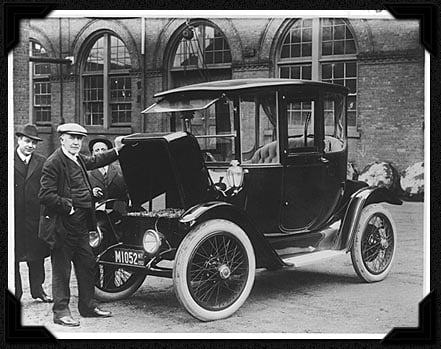Partial Zero-Emissions Vehicles or PZEVs for short, seem to be one of those “oddball” classes of vehicles. PZEVs have internal combustion engines but their engines produce no what are referred to as evaporative emissions. Hybrids, unlike PZEVs, emit exhaust but the amount of emissions emanating from the exhaust is comparatively much lower than that coming out of the exhaust of standard internal-combustion-engine-powered motor vehicles. Hybrids are able to achieve this through use of two under-the-hood power plants, one being a gasoline-driven internal combustion engine while the other is an electrically powered motor, the latter’s power source being at least one battery if not more.
In a hybrid vehicle, the two so-called “separate but unequal” propulsion devices (electric motor and internal-combustion engine) can either operate independently or in tandem, the pair thus complementing each other, all of which enables the overall operation of such a vehicle to be more fuel efficient and less harmful to the environment, that is, when compared to what the typical internal-combustion-engine-equipped vehicle (ICEV) is capable of achieving in that sense. Taking into consideration both types of vehicles – hybrids and PZEVs – these vehicles have a leg up on their straight internal-combustion-engine-powered cousins where the production of exhaust emissions is concerned.
This makes classifying these motor vehicle examples anything but forthright. Should hybrids be added to the larger categorization of electric vehicles (EVs)? Should PZEVs be lumped together with the internal-combustion engine (ICE) class? Or should hybrids and partial zero-emissions be in classes all their own?
By now, my suspicion is people reading this might be thinking ‘why does this even matter?’ Well, it does matter. And, here’s why.
With regard to automobile manufacturing and utilization in the United States, history seems to be repeating itself in the sense that EV manufacturing and use was once the norm: in the late 19th and early 20th centuries – 1880s to 1910s, roughly.
We know many automakers are pledging to pour either a portion or all of their manufacturing energies into building electric vehicles. A number of states are committed to meeting decarbonization mandates. Since transportation more than any other single sector is responsible for contributing more in the way of greenhouse gas emissions to the atmosphere, cutting GHGs right now appears to be priority 1 – just ahead of energy. And this is shaping dialogue and decision-making in terms of how and where emissions will be reined in. In transportation right now, the main focuses appear to be on auto manufacturing, utilization and fueling considerations.
As to which automakers are committed to the cause, how many manufactured automobiles are coming down the (assembly) line and over what timeframe, and what percentage will be straight electric, hybrid, PZEV or straight internal-combustion-engine (ICE) equipped, are questions yet to be fully addressed. The target in California, meanwhile, is 100 percent new ZEV (zero-emissions [light-duty] vehicle) sales in state by 2035.
But, there’s another Golden State goal and that is, net-zero GHG emissions by 2050. How to get there, well, that’s the $64 million question.
If getting to that 100 percent electric or zero-emissions new-car sales mark is part and parcel of our achieving the 2050 net-zero emissions objective, to accomplish will hybrids and/or PZEVs be among those elements in the larger equation? In other words, will PZEVs and/or hybrids be part of the solution in contributing to net-zero emissions coming from transportation all in an effort to allow us to meet our decarbonization objectives?
If it is determined that hybrids especially – and possibly PZEVs – have zero place in us getting to net-zero emissions by the middle of the century, then we just may want to rethink how hybrids are classified in the overall scheme of things. If, on the other hand, hybrids along with battery electric vehicles (BEVs) and fuel-cell electric vehicles (FCEVs) – the last two otherwise referred to as plug-in electric vehicles (PEVs) – in fact do make the grade, qualify, in other words, then they should in my opinion be classified accordingly as zero-emissions vehicles (ZEV). If not, then hybrids should not be given the ZEV designation and be phased out. It’s as simple and as complicated as that.
Notes
In an earlier version of this article I mistakenly conflated partial zero-emissions vehicles and hybrids as being one and the same thing. Moreover, information regarding hybrid vehicles and the way in which their propulsion devices worked also was not completely accurate. Portions of this post have since been rewritten. I apologize for any confusion this may have caused.
Last updated on Jul. 29, 2023 at 8:08 a.m. Pacific Daylight Time.
⁃ Alan Kandel
Copyrighted material.
